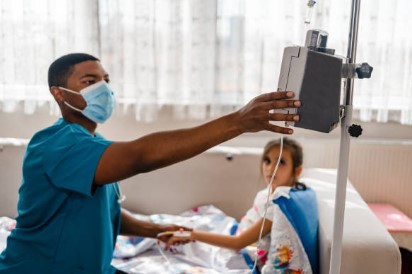The choice of antibiotics for sepsis treatment depends on several factors, including the suspected or identified source of infection, local resistance patterns, and individual patient factors. Antibiotic therapy is typically initiated promptly after sepsis is diagnosed or suspected, even before the specific pathogen is identified. This initial treatment is often referred to as empiric antibiotic therapy. Once the causative pathogen is identified and its susceptibility to antibiotics is determined, the antibiotic regimen may be adjusted accordingly. Below is a general overview of the antibiotic protocols commonly used for sepsis:
1. Empiric Antibiotic Therapy
Broad-spectrum antibiotics are usually initiated as empiric therapy to cover a wide range of potential pathogens. Commonly used classes of antibiotics for empiric therapy in sepsis include:
Beta-lactam antibiotics
Examples include penicillins (such as ampicillin, piperacillin-tazobactam), cephalosporins (such as ceftriaxone, cefepime), and carbapenems (such as meropenem, imipenem-cilastatin).
Fluoroquinolones
Examples include ciprofloxacin and levofloxacin.
Aminoglycosides
Examples include gentamicin and amikacin.
Glycopeptides
Examples include vancomycin and teicoplanin.
Oxazolidinones
Examples include linezolid.
2. De-escalation and Targeted Therapy
Once the pathogen is identified and its susceptibility to antibiotics is known, the antibiotic regimen may be adjusted or narrowed to provide more targeted therapy. This involves selecting antibiotics that specifically target the identified pathogen while considering factors such as local resistance patterns and the individual patient’s clinical response.
It’s important to note that specific antibiotic regimens and protocols may vary based on local guidelines, healthcare facility protocols, and individual patient factors. The choice of antibiotics and treatment duration should be determined by healthcare professionals based on the patient’s condition and the available evidence-based guidelines.
Prompt initiation of appropriate antibiotic therapy is critical in sepsis treatment. Early administration of effective antibiotics improves outcomes and reduces the risk of complications. However, it’s essential to remember that antibiotic therapy should always be prescribed and managed by healthcare professionals based on the individual patient’s needs and in accordance with local guidelines and best practices.
Symptoms of Sepsis
Sepsis is a serious medical condition that can have a rapid onset and requires immediate medical attention. The symptoms of sepsis can vary from person to person, but some common signs and symptoms include:
Fever
Sepsis often causes a high body temperature, resulting in a fever. However, in some cases, especially in older adults or individuals with weakened immune systems, the body temperature may be abnormally low (hypothermia).
Rapid heartbeat
Sepsis can lead to an increased heart rate, known as tachycardia. The heart may beat faster than usual in an attempt to compensate for the effects of infection and maintain blood flow.
Rapid breathing
Sepsis can cause rapid, shallow breathing, also known as tachypnea. This is another compensatory mechanism to deliver more oxygen to the body’s tissues.
Altered mental status
Sepsis can affect the brain and cause confusion, disorientation, dizziness, or difficulty concentrating. In severe cases, it can lead to a state of delirium or even unconsciousness.
Decreased urine output
Sepsis can impact kidney function, resulting in decreased urine production. This may be accompanied by dark-colored urine or a feeling of decreased fluid intake.
Low blood pressure
Sepsis can cause a drop in blood pressure, leading to hypotension. This can result in dizziness, lightheadedness, or fainting.
Cold, clammy skin
The skin may feel cool to the touch and appear pale or mottled. This can be a sign of poor blood circulation and inadequate oxygen delivery to the extremities.
Difficulty breathing
Sepsis can affect the lungs and lead to shortness of breath, rapid breathing, or a feeling of breathlessness.
Gastrointestinal symptoms
Nausea, vomiting, abdominal pain, and diarrhea may occur in cases of sepsis.
Extreme fatigue or weakness
Sepsis can cause profound fatigue, weakness, and a general feeling of unwellness.
It’s important to note that sepsis can progress rapidly, and the symptoms may worsen over time. If you or someone you know experiences any signs or symptoms of sepsis, it is crucial to seek immediate medical attention. Early recognition, diagnosis, and treatment of sepsis significantly improve the chances of a successful outcome.



